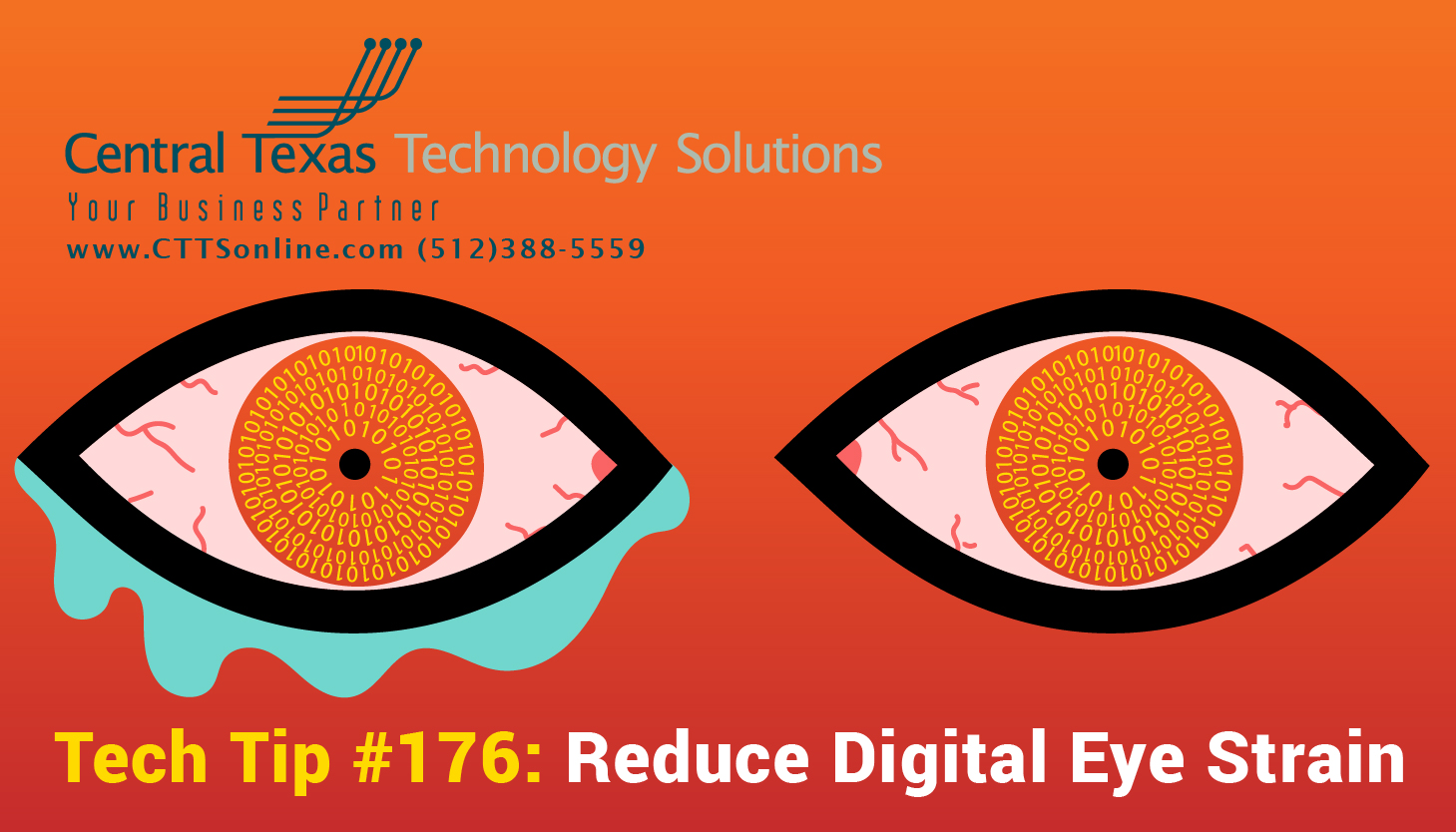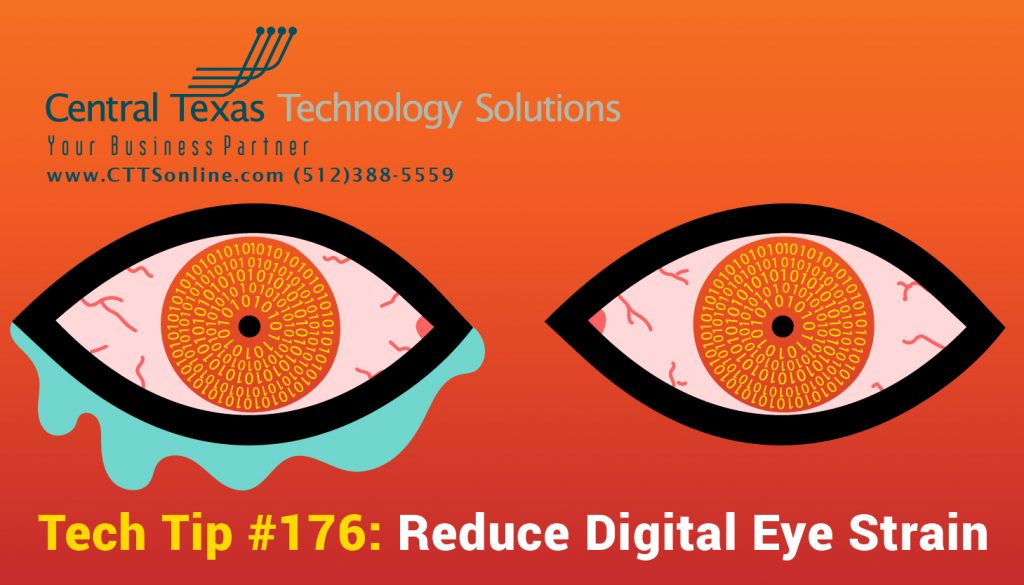
 There is no denying the fact that we live in a digital world. Whether at home recreationally or while at work, we spend a significant amount of our daily life staring at a screen in some capacity. After a long day at the office, or a lengthy binge session with our favorite show or game, we might notice that our eyes feel overly tired, or are excessively watery, and/or we might have a headache. Sound familiar in any way? If so, congratulations! You are familiar on a firsthand basis with today’s topic of eye strain.
There is no denying the fact that we live in a digital world. Whether at home recreationally or while at work, we spend a significant amount of our daily life staring at a screen in some capacity. After a long day at the office, or a lengthy binge session with our favorite show or game, we might notice that our eyes feel overly tired, or are excessively watery, and/or we might have a headache. Sound familiar in any way? If so, congratulations! You are familiar on a firsthand basis with today’s topic of eye strain.
Disclaimer: All information in this article has been researched and pulled from reputable sources. With that said: We at CTTS are not medical professionals. If you have concerns about your vision and/or eye health, please consult an optometrist!
Eye Strain?
According to the Mayo Clinic, eyestrain is “a common condition that occurs when your eyes get tired from intense use, such as while driving long distances or staring at computer screens and other digital devices.” While not a significant danger in and of itself, eye strain can produce a collection of symptoms with it that make us feel “less than great.” These symptoms can include, but are not limited to:
- Sore, tired, burning or itching eyes
- Watery or dry eyes
- Blurred or double vision
- Headache
- Sore neck, shoulders or back
- Increased sensitivity to light
- Difficulty concentrating
Eye strain itself won’t directly lead to further complications, but it can compound the effects of existing conditions we might not be aware of. Additionally, eye strain itself can exist/create a positive feedback loop into itself. The more strained our eyes become, the easier it is to strain them further, with symptoms taking less time to manifest the more tired/strained our eyes become.
Causes!
Right, so now we know what to look for as an indicator of eye strain, but what are the contributing factors to its existence in the first place? It goes without saying that excessive screen time is a leading contributor to almost all eye strain cases. Believe it or not, one of the leading causes of eye strain is that, for whatever reason, screen make us forget to blink! Studies suggest that the average human blinks, on average, 18-22 times per minute. Those numbers drop significantly to 3-7 times per minute with the introduction of digital screens. In addition to just simply forgetting how our eyes are supposed to work, here are some other common contributing factors to eye strain:
- Improper viewing distances and angles
- Glare, Improper/Poor Lighting
- Incorrect Application, device, and/or system settings
- Poor posture
- Lack of sleep
Preventative measure!
Fortunately for us, eye strain is rather easy to combat. While the best method to do so may be to simply “stop looking at screens!” we all realize and admit that this is not a very realistic, or practical, solution. Below are a few tips and strategies/methods we can all employ to help reduce the daily wear and tear on our eyes:
- Blink!
- Employ the 20-20-20 method: every 20 minutes, look at an object at least 20 feet away for at least 20 seconds.
- Take longer (at least 15min) breaks every two hours or so of screen time.
- Adjust the lighting in the area – your device should not be brighter/darker than the surrounding environment.
- Adjust contrast and text size on your screen. Use night/dark mode settings if available. There are free software applications, such as F.LUX, that will automatically adjust your screen settings for various lighting conditions and times of day to help with this.
- Position your screen correctly! Make sure your computer screen is about 25 inches, or an arm's length, away from your face. The center of the screen should be about 10-15 degrees below your eye level.
- Get some sleep! The recommended 8 hours a night will go a long way towards helping your eyes recover from the daily stress we subject them to.
If you find this article helpful, please share it. If you're looking for assistance in achieving any technology-related business goals, including working from home, network structure, and future strategies, give CTTS a call today for a free IT consultation to see where you stand and how we can help you get to where you want to be: (512) 388-5559.

By Brandon Kaylor
Desktop Support Technician
Central Texas Technology Solutions
